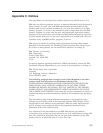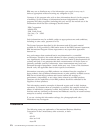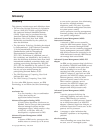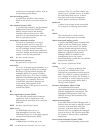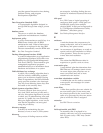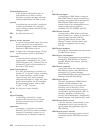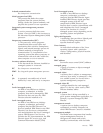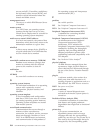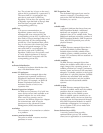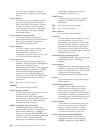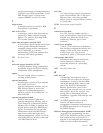provides general interactive time sharing,
problem solving, and program
development capabilities.
D
Data Encryption Standard (DES)
A cryptographic algorithm designed to
encrypt and decrypt data using a private
key.
database server
The server on which the database
application and database are installed.
deployment policy
A policy that associates a specific bay in a
BladeCenter chassis with an RDM
noninteractive task. When a blade server
is added to or replaced in the bay, IBM
Director automatically runs the RDM task.
DES See Data Encryption Standard.
Desktop Management Interface (DMI)
A protocol-independent set of application
programming interfaces (APIs) that were
defined by the Distributed Management
Task Force (DMTF). These interfaces give
management application programs
standardized access to information about
hardware and software in a system.
Diffie-Hellman key exchange
A public, key-exchange algorithm that is
used for securely establishing a shared
secret over an insecure channel. During
Phase II negotiations, the Diffie-Hellman
group prevents someone who intercepts
your key from deducing future keys that
are based on the one they have.
digital signature algorithm (DSA)
A security protocol that uses a pair of
keys (one public and one private) and a
one-way encryption algorithm to provide
a robust way of authenticating users and
systems. If a public key can successfully
decrypt a digital signature, a user can be
sure that the signature was encrypted
using the private key.
directory manager
A facility for maintaining the user
directory of one or more z/VM systems.
discovery
The process of finding resources within
an enterprise, including finding the new
location of monitored resources that were
moved.
disk pool
In z/VM Center, a logical grouping of
contiguous disk spaces. A disk pool can
include disk spaces from multiple
physical disks. A disk pool corresponds to
a z/VM Directory Maintenance Facility
(DirMaint
™
) allocation group.
DMI See Desktop Management Interface.
E
enclosure
A unit that houses the components of a
storage subsystem, such as a control unit,
disk drives, and power source.
event An occurrence of significance to a task or
system, such as the completion or failure
of an operation. There are two types of
events: alert and resolution.
event action
The action that IBM Director takes in
response to a specific event or events.
event-action plan
A user-defined plan that determines how
IBM Director will manage certain events.
An event action plan comprises one or
more event filters and one or more
customized event actions.
event-data substitution variable
A variable that can be used to customize
event-specific text messages for certain
event actions.
event filter
A filter that specifies the event criteria for
an event action plan. Events must meet
the criteria specified in the event filter in
order to be processed by the event action
plan to which the filter is assigned.
extension
See IBM Director extension.
F
field-replaceable unit (FRU)
An assembly that is replaced in its
entirety when any one of its components
fails. In some cases, a FRU may contain
other FRUs.
Glossary 281





